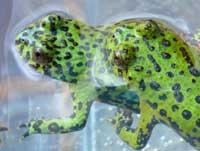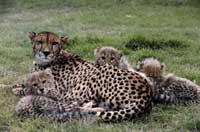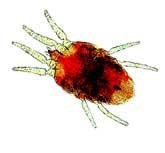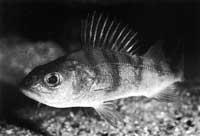Sex: need and pleasure
2003/08/03 Galarraga Aiestaran, Ana - Elhuyar Zientzia

Most plants and animals reproduce sexually. To do this, these living beings create cells with half of the genetic information, the gametes. In general, male gametes are called spermatozoa and females are called ovules, and when they join together, the new life arises. But the creation of gametes entails two disadvantages.
On the one hand, the body spends a lot of energy to create gametes, and the species also costs more to maintain individuals of two sexes than the individual ones. On the other hand, when the genetic information of two of them is mixed, the contribution of each parent to the descendant is divided by two. On the contrary, in asexual reproduction, all the genes are transmitted to the next one. So, what is the advantage of sex? Why do species with sexual reproduction last?
Forms of reproduction
And it is that sexual is not the only way to reproduce. For example, bacteria simply divide. The sponges are sufficient with the release of a cell that produces a colony elsewhere. The sea stars, for their part, create a complete individual from a part of their body. There are also beings who reproduce by groaning: on the side of the adult, a complete copy is started and, once enough grows, it separates. This is the case of the hydra. In all cases, the sequels have the same genetic information as the previous one.

Another form of reproduction is partenogenesis. Thus, invertebrates abound, while in vertebrates only partenogenesis reproduces 74 species: 22 species of fish, 23 amphibians and 29 reptiles. The eggs of these species develop without fertilization and those born are the clones of their mothers. On the other hand, some species reproduce partenogeneously or sexually, depending on the conditions of the environment.
Virtually all vertebrates and some invertebrates and plants reproduce sexually. Sexual reproduction arises later than other forms, and if it has been maintained to date it is because it has some advantage. And so it is: sex increases the genetic variability of the species, so if there is a harmful change for the species in the environment, some individuals can prosper and last the species.
On the contrary, in species with asexual reproduction, genetic variability is very reduced and, in critical situations, they have much less chance of advancing. In addition, sexual reproduction allows to reduce the effect of harmful mutations.
Salt and pepper of sex

However, for species sex is not free. The need for two sexes is expensive for the species, since half (males) of the individuals of the species only serves to fertilize the other half (females). In addition, the presence of two sexes generates enough salsa.
In most species, genetics determine the evolution of the embryo: Those carrying Y chromosome are males and the rest females. In any case, the characteristics of one or the other sex depend not only on chromosomes, but also on hormones, being able to appear genetically the characteristics of the other sex.
In other species, on the contrary, having sex or another is a matter of temperature. For example, in crocodiles, if the temperature is low, the embryo becomes female and the male if the temperature is high, the turtle is inverted. There are also hermaphroditic species, in which the same organism produces male and female gametes.
In the reproduction strategies there is also a great variety. Tell us: some females, after fertilization, kill the male! However, this behavior is only given in a few species. If not, in many species, males have a single partner throughout their lifetime and use all the energy they have provided by taking care to ensure the transmission of their genes. On other occasions, the couple changes constantly in the hope that someone can germinate.

In females there is everything: in species with a single partner, the female seeks an ideal male to care for her offspring, bring food and protect her family. In other species, in times of zeal, the female tries to reconcile with the majority of males that can.
As for offspring, two great strategies are distinguished: some species, such as fish, have a lot of descending, but individuals have little chance of survival. The other strategy is contrary; they have few offspring and care well for them to reach maturity. This is the case of the human species.
It is clear that there are infinite forms and variants of reproduction. And pleasure… what is the pleasure for? According to experts, the fertility of the female in non-visible species is only a way to ensure reproduction. Therefore, everything favours proliferation.
Published in 7K.

Gai honi buruzko eduki gehiago
Elhuyarrek garatutako teknologia




